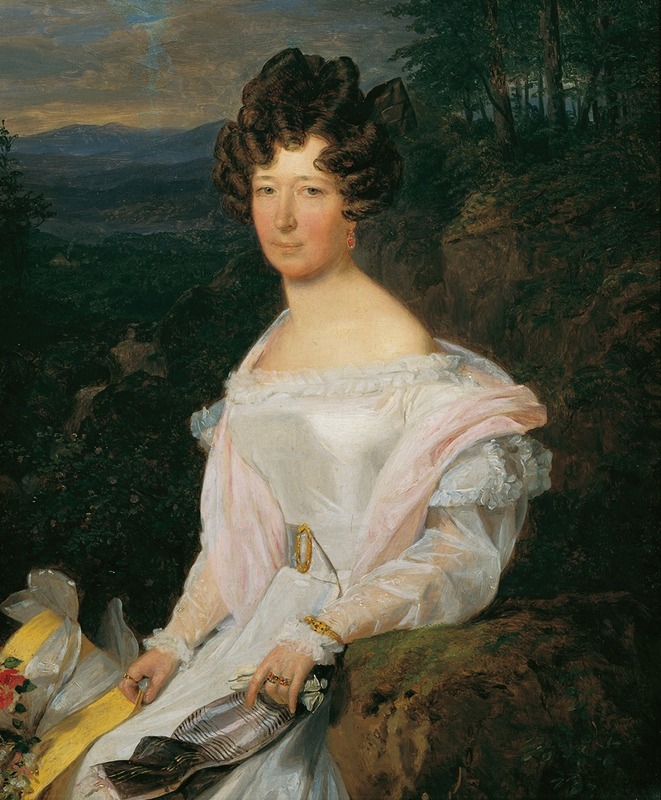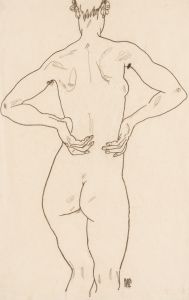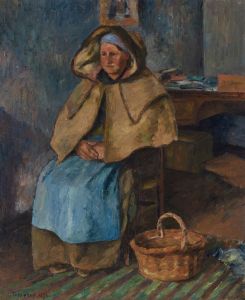
Dame in weißem Kleid vor einer Wienerwaldlandschaft
A hand-painted replica of Ferdinand Georg Waldmüller’s masterpiece Dame in weißem Kleid vor einer Wienerwaldlandschaft, meticulously crafted by professional artists to capture the true essence of the original. Each piece is created with museum-quality canvas and rare mineral pigments, carefully painted by experienced artists with delicate brushstrokes and rich, layered colors to perfectly recreate the texture of the original artwork. Unlike machine-printed reproductions, this hand-painted version brings the painting to life, infused with the artist’s emotions and skill in every stroke. Whether for personal collection or home decoration, it instantly elevates the artistic atmosphere of any space.
Ferdinand Georg Waldmüller was an Austrian painter renowned for his contribution to the Biedermeier period, a time characterized by a focus on realism and detail in art. One of his notable works is "Dame in weißem Kleid vor einer Wienerwaldlandschaft" (Lady in a White Dress before a Vienna Woods Landscape), which exemplifies his mastery in capturing the essence of the natural world and the elegance of human figures.
Waldmüller was born in Vienna in 1793 and became one of the most significant Austrian painters of the 19th century. His work is celebrated for its detailed realism and vibrant depiction of light and nature. He was a prominent figure in the Biedermeier period, which spanned from 1815 to 1848, a time when art focused on the middle class and domestic life, often emphasizing the beauty of nature and everyday scenes.
"Dame in weißem Kleid vor einer Wienerwaldlandschaft" is a quintessential example of Waldmüller's style. The painting features a woman dressed in a white gown, standing gracefully against the backdrop of the Vienna Woods, a forested region near Vienna known for its picturesque landscapes. The choice of a white dress highlights the purity and elegance of the subject, while the Vienna Woods provide a serene and lush setting that complements the figure's poise.
Waldmüller's attention to detail is evident in the meticulous rendering of the woman's attire and the surrounding landscape. The folds of the dress are painted with precision, capturing the texture and flow of the fabric. The Vienna Woods are depicted with a keen eye for the play of light and shadow, showcasing Waldmüller's skill in portraying natural environments. The trees, foliage, and sky are rendered with a realism that brings the scene to life, inviting the viewer to appreciate the tranquility and beauty of the setting.
The painting reflects Waldmüller's interest in the interplay between humans and nature, a common theme in his work. By placing the elegantly dressed woman in a natural setting, he creates a harmonious balance between the human figure and the landscape, emphasizing the connection between the two. This approach is characteristic of the Biedermeier period, where artists often sought to depict the beauty of everyday life and the natural world.
Waldmüller's work, including "Dame in weißem Kleid vor einer Wienerwaldlandschaft," has been influential in the development of Austrian art. His paintings are celebrated for their technical skill, attention to detail, and ability to capture the essence of his subjects. Today, his works are held in high regard and can be found in various museums and collections, serving as a testament to his enduring legacy in the art world.
In summary, "Dame in weißem Kleid vor einer Wienerwaldlandschaft" is a fine example of Ferdinand Georg Waldmüller's artistic prowess. Through this painting, Waldmüller not only showcases his technical skills but also his ability to convey the serene beauty of the natural world and the elegance of human presence within it.


















